AWS Certified AI Practitioner
Applications of Foundation Models
Training and Fine tuning Process for Foundation Models
In this lesson, we delve into various customization techniques for foundation models. We cover general methodologies such as pre-training, fine-tuning (including parameter-efficient, multi-task, and domain-specific approaches), and continuous pre-training. This comprehensive guide enhances your understanding of these techniques while maintaining a broad perspective on model customization.
Foundation Models Overview
Foundation models are large-scale, pre-trained architectures designed for a wide range of tasks—from language processing and classification to image recognition and generation. Key techniques include pre-training, fine-tuning, and ongoing updates via continuous pre-training.
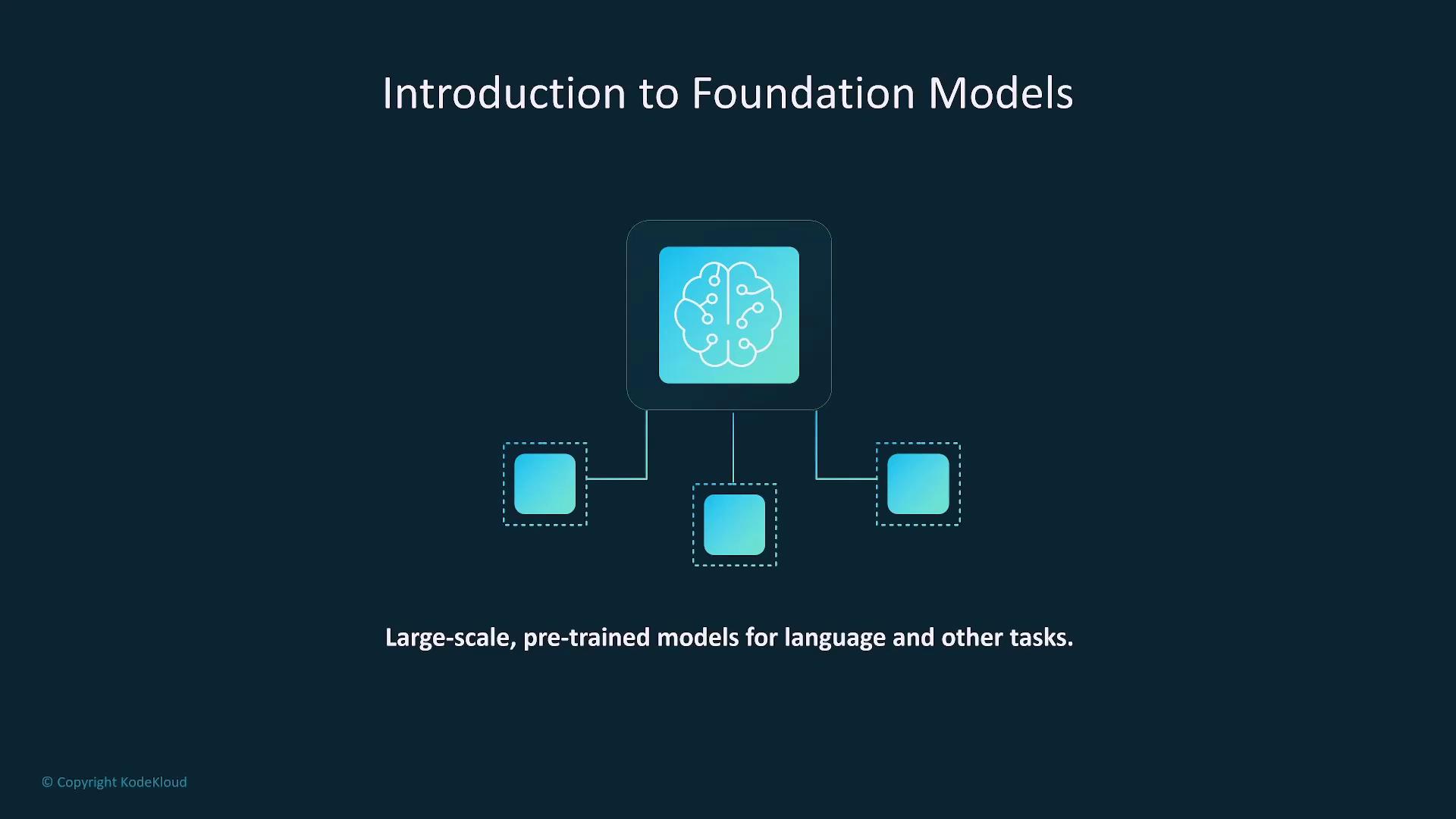
For example, continuous pre-training allows models to stay current by incorporating new data regularly.
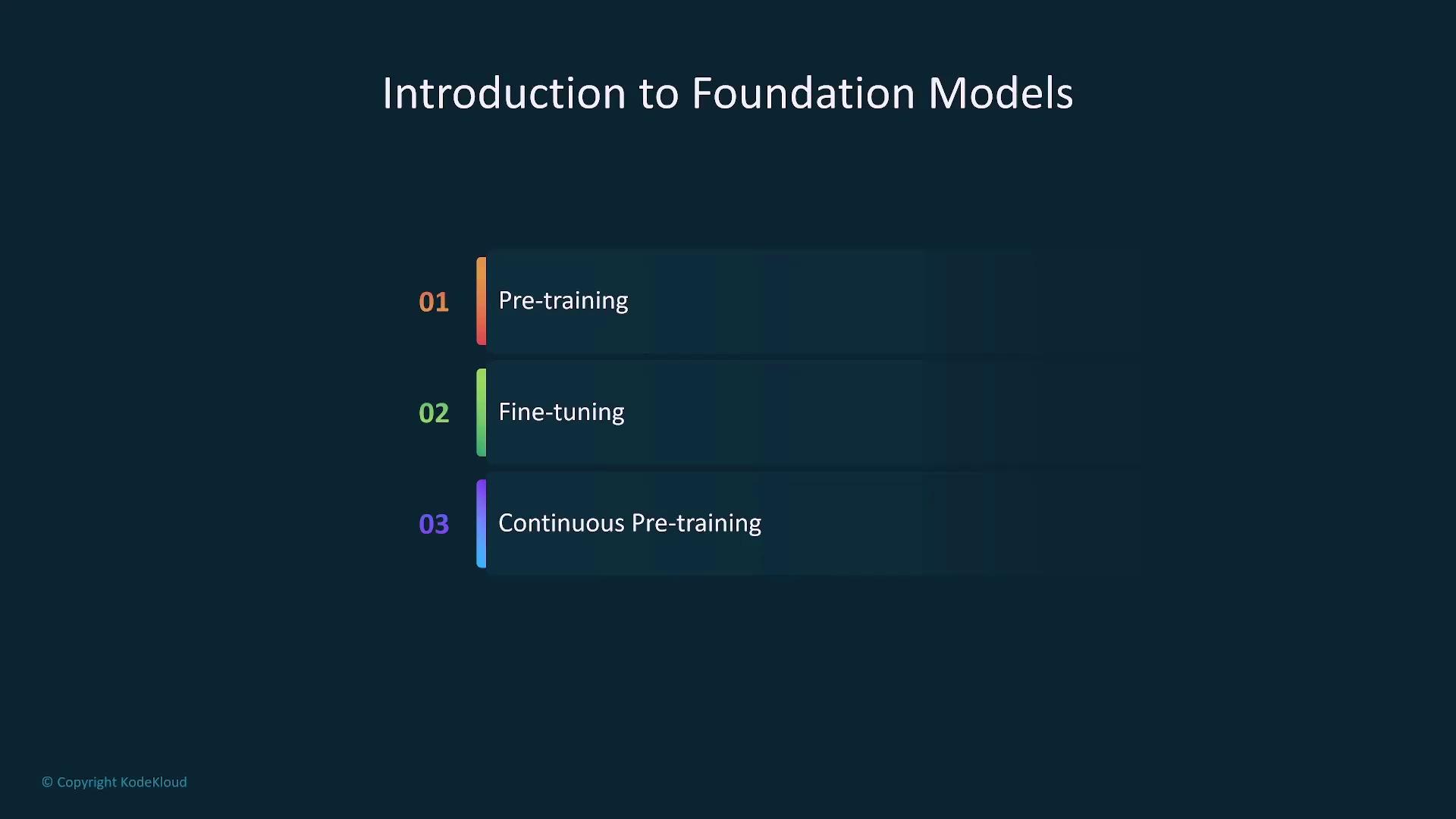
Pre-training
Pre-training is the initial phase where a model is exposed to vast amounts of unsupervised data—such as text, images, or audio. This stage equips the model with broad capabilities, although it demands significant computational resources.
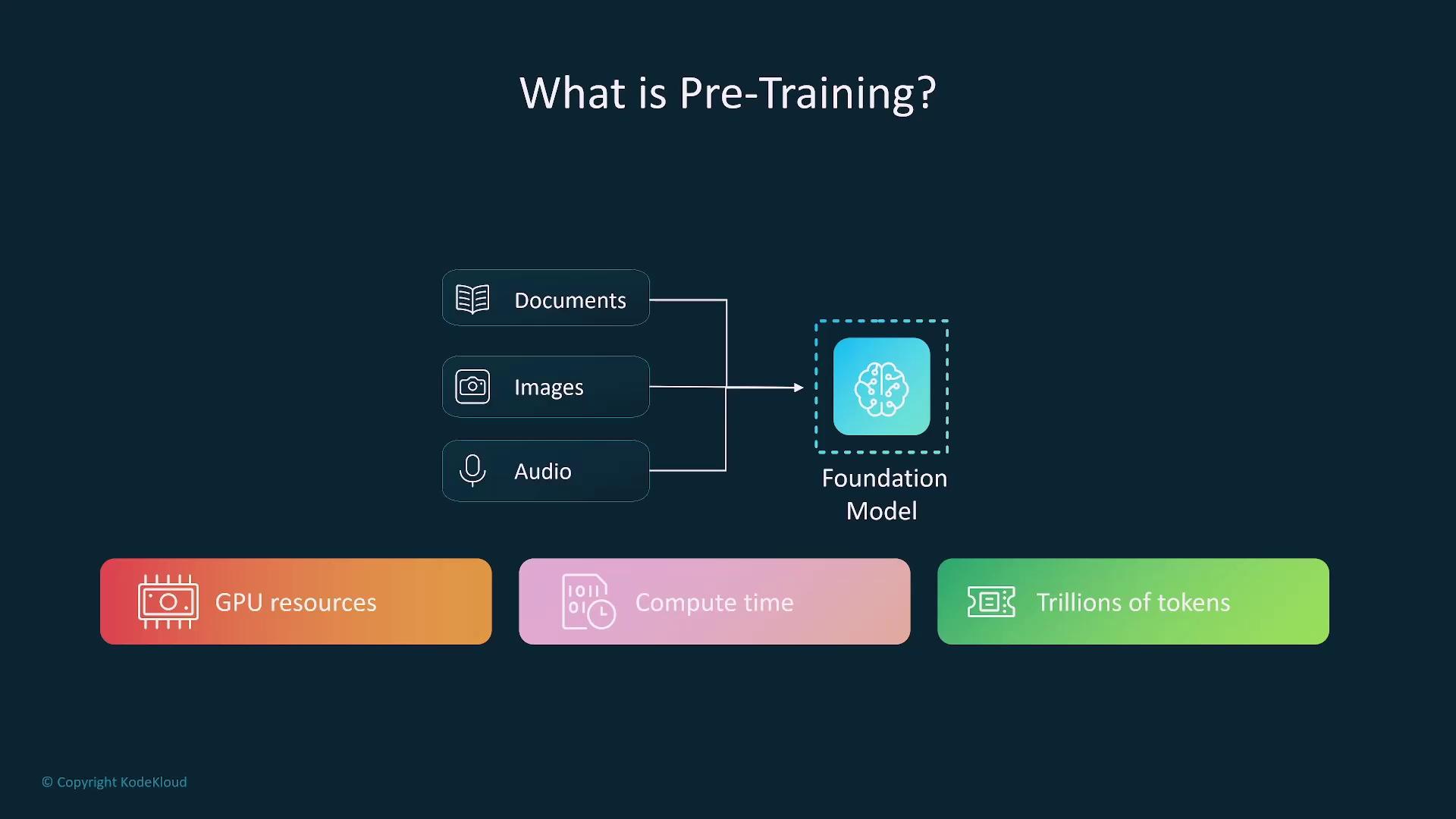
Self-supervised learning is typically used during pre-training, where the model predicts missing information, thus assimilating a diverse range of knowledge.
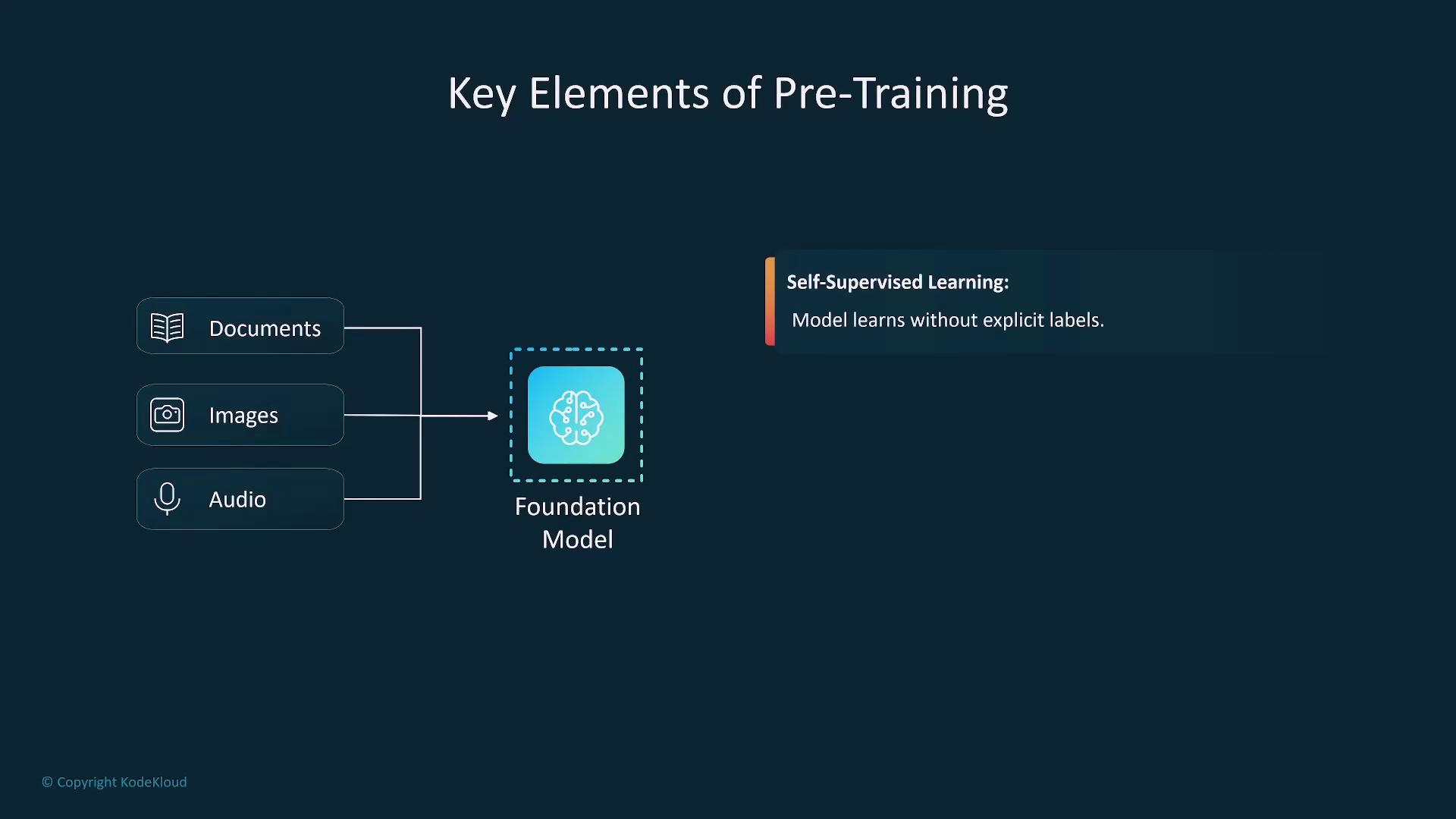
Fine-tuning
Fine-tuning adapts the general pre-trained model to specific tasks using domain-specific or task-specific labeled data. For instance, a language model may be fine-tuned for medical transcription to enhance its accuracy in that field.
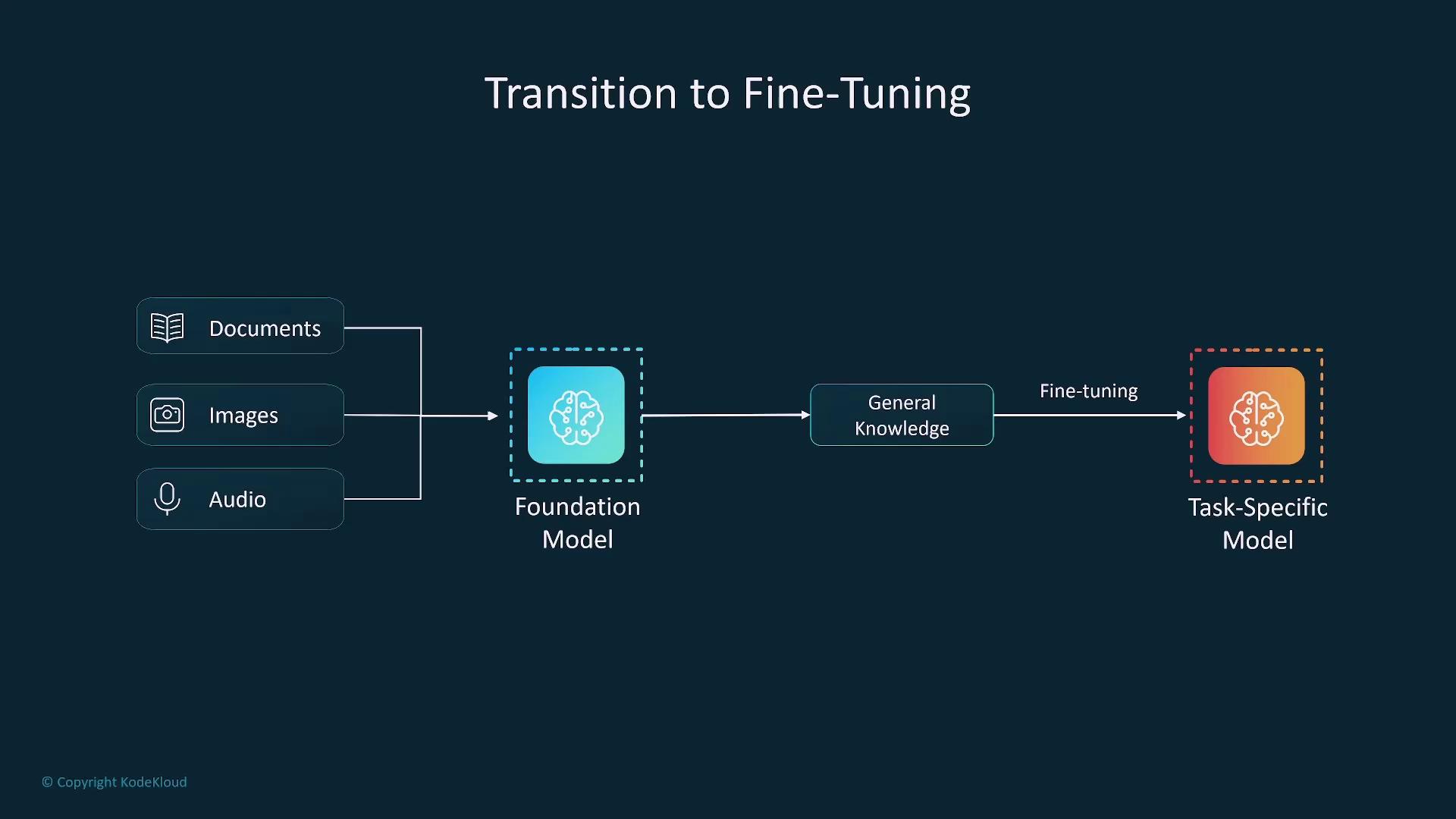
Supervised learning with carefully labeled datasets helps refine the model’s performance by teaching it finer details required for specific tasks.

A key distinction to note is that pre-training focuses on general-purpose learning from unstructured data, whereas fine-tuning sharpens a model for particular tasks with curated data.
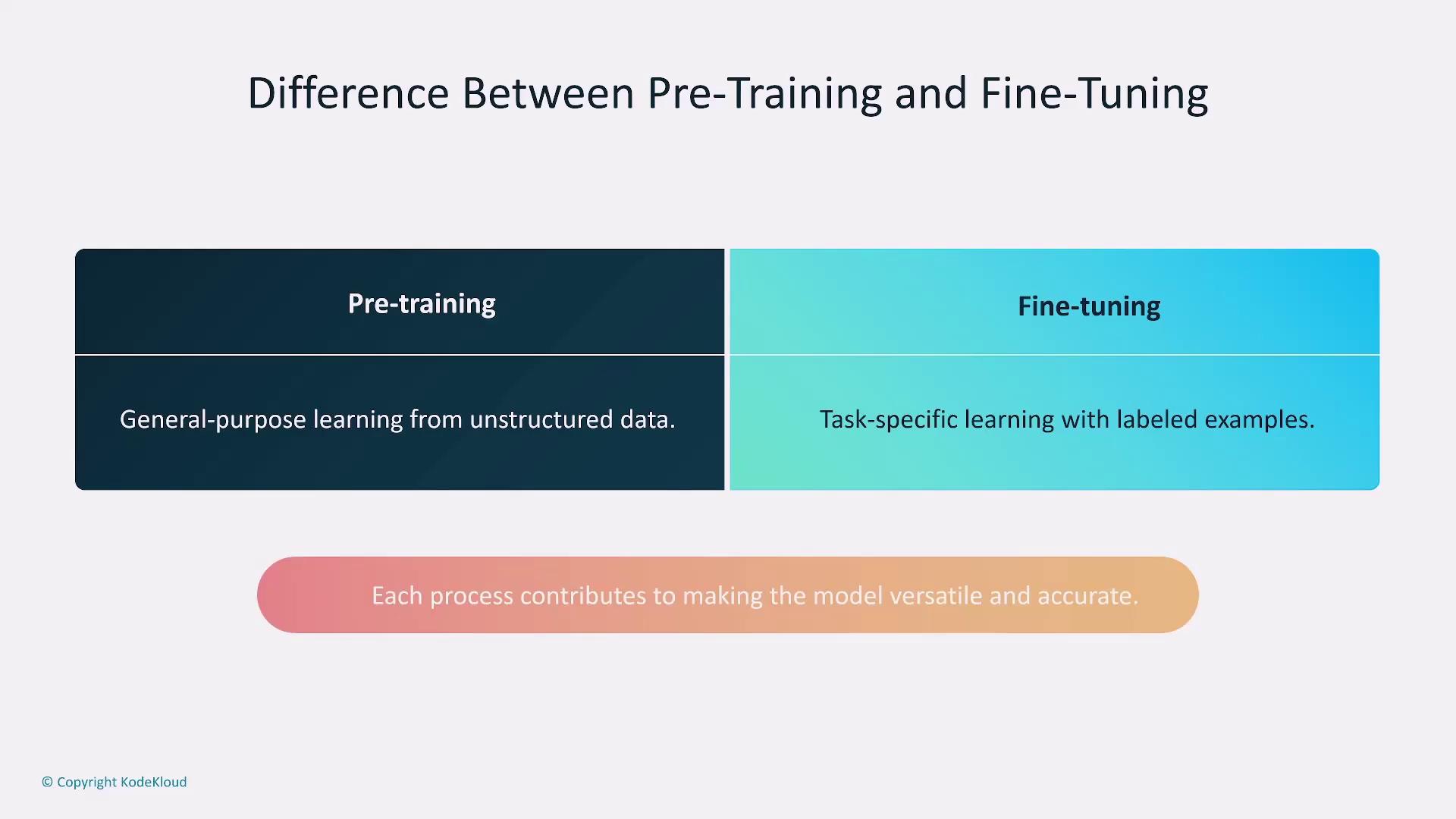
Fine-tuning may also integrate instruction-based methods, where models follow explicit task instructions for applications such as summarization, translation, or code generation.
![]()
Note
Ensure a balanced fine-tuning process to prevent over-specialization. Over-tuning for a single task can lead to catastrophic forgetting, where the model loses its general capabilities.
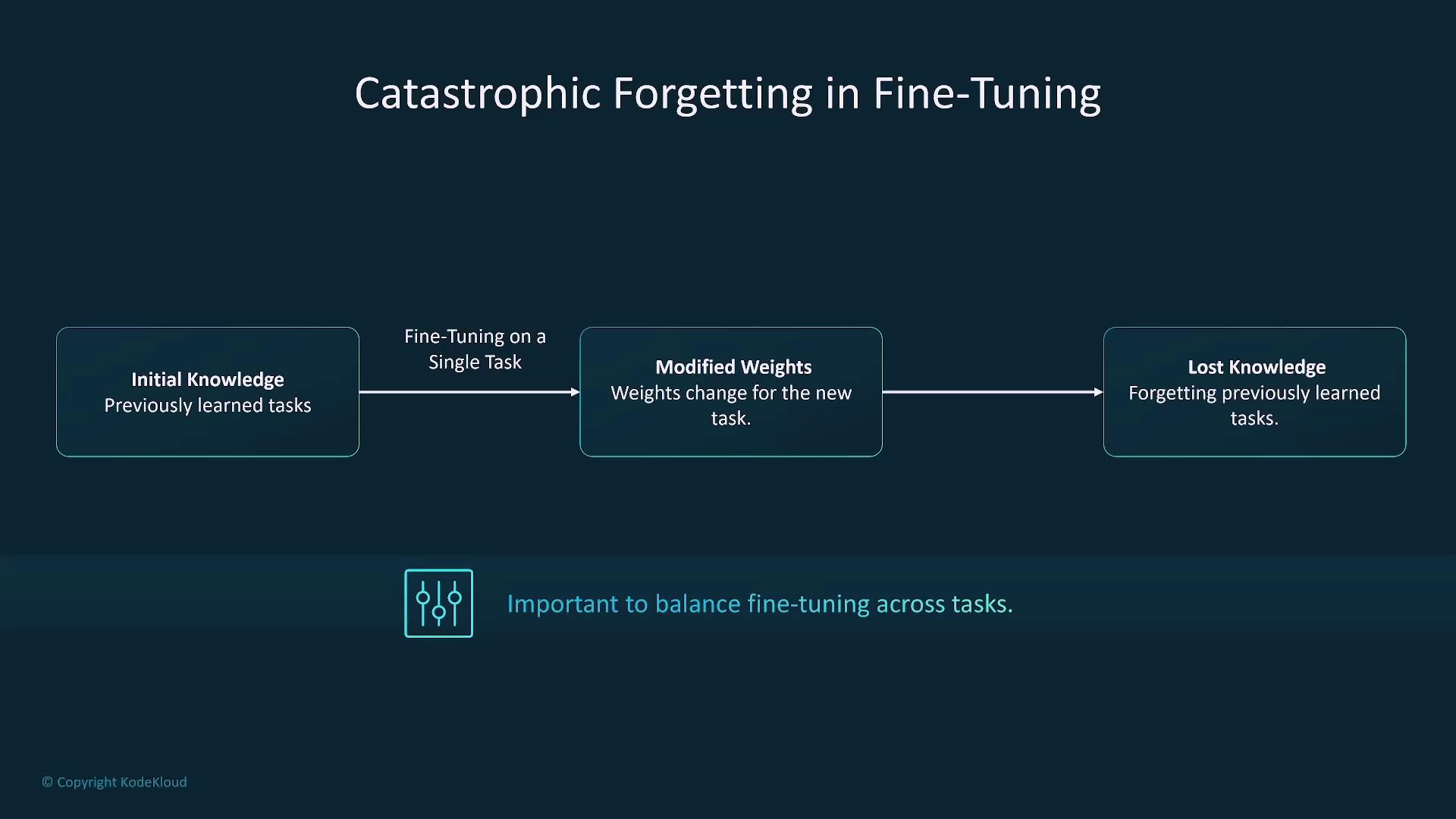
Parameter-Efficient Fine-Tuning (PEFT)
To minimize resource consumption during fine-tuning, parameter-efficient techniques have been developed. These methods involve freezing much of the pre-trained model's parameters and fine-tuning only a small subset of task-specific layers.
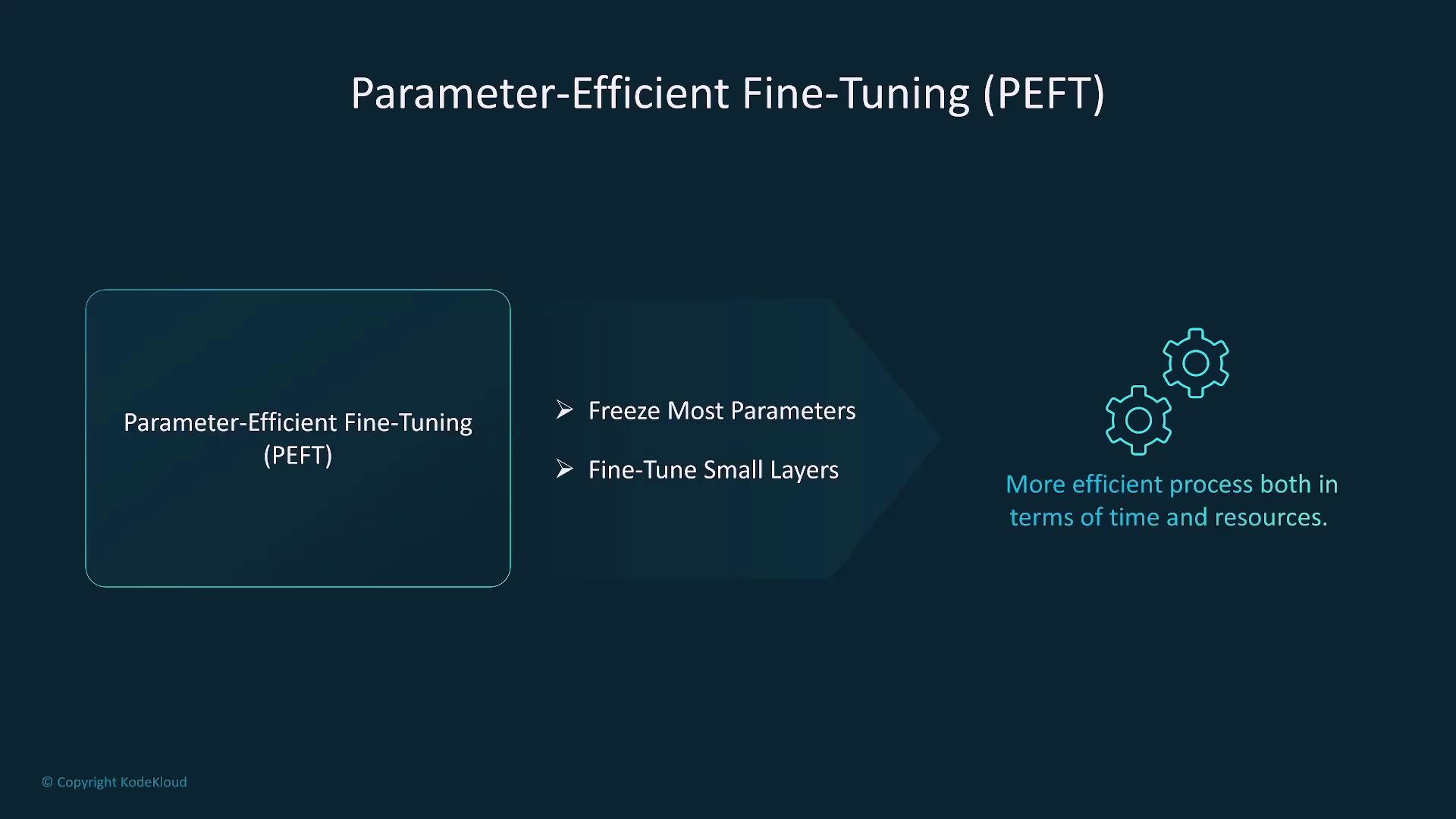
Two popular PEFT methods include:
- Low-Rank Adaptation (LoRA): Freezes the majority of the model weights, allowing only low-rank matrices to update during training.
- Representation Fine-Tuning (REFT): Adjusts internal representations rather than direct weights, ideal for tasks involving coding or logical reasoning.
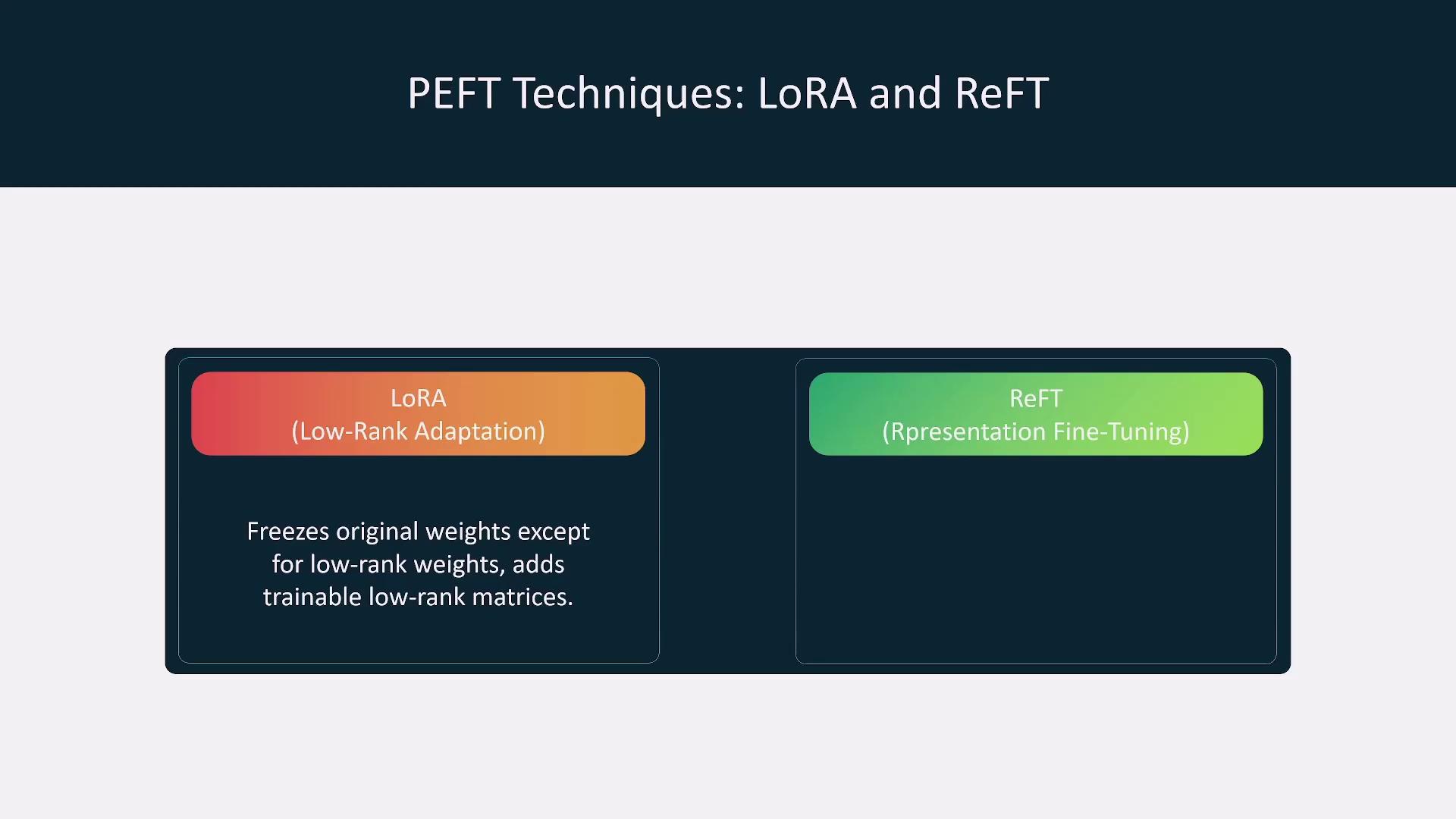
Multi-Task and Domain-Specific Fine-Tuning
Beyond single-task fine-tuning, consider these advanced approaches:
Multi-Task Fine-Tuning: Trains the model on several tasks simultaneously, enhancing versatility and reducing the risk of catastrophic forgetting.
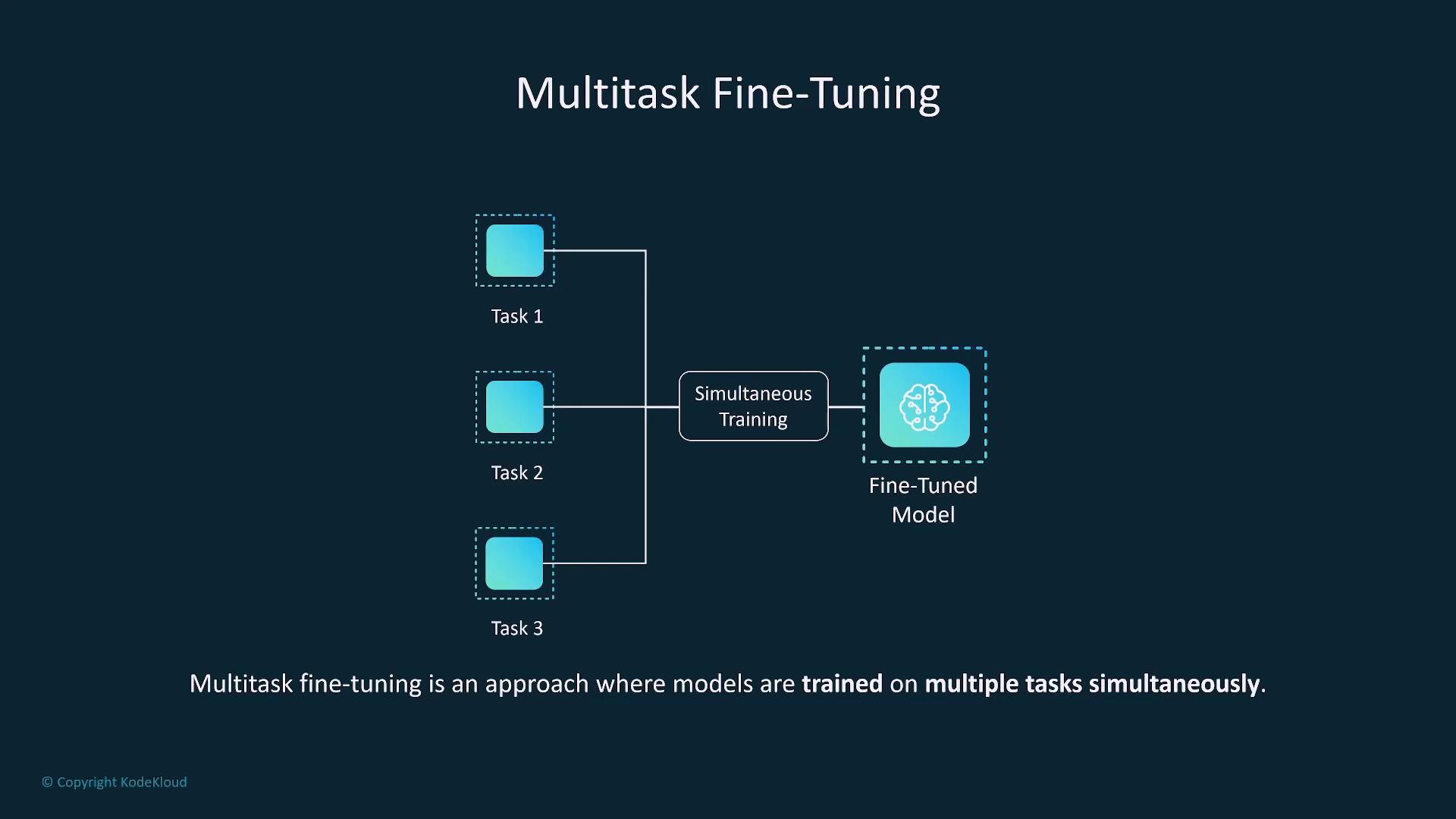
Domain-Specific Fine-Tuning: Uses data from specific industries (e.g., healthcare, finance, legal) to optimize model performance for industry-centric challenges.
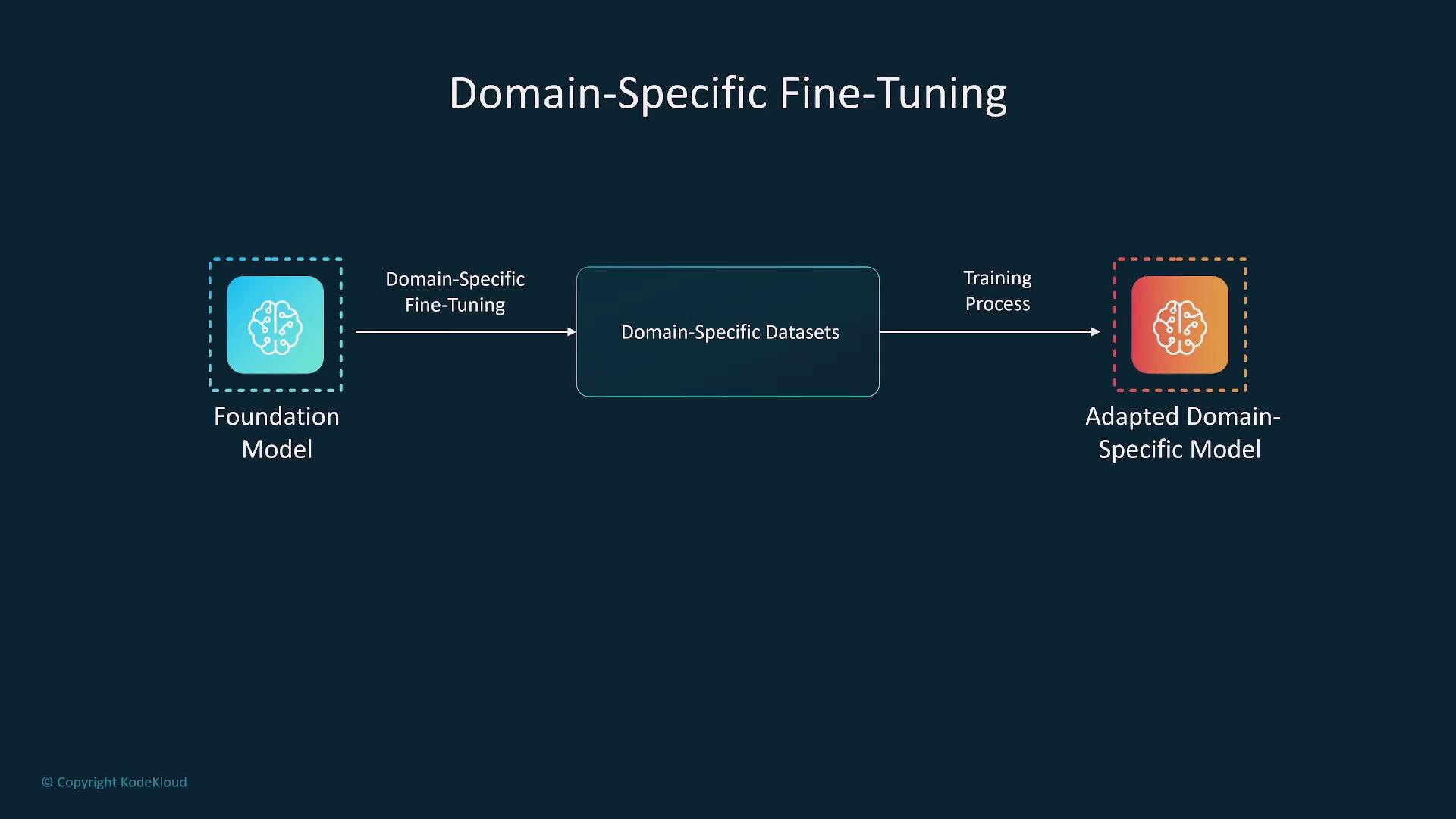
Continuous Pre-training
Continuous pre-training involves regularly updating models with new data to maintain relevance and performance. For instance, OpenAI discloses the training data cutoff to signal the recency of its training corpus.
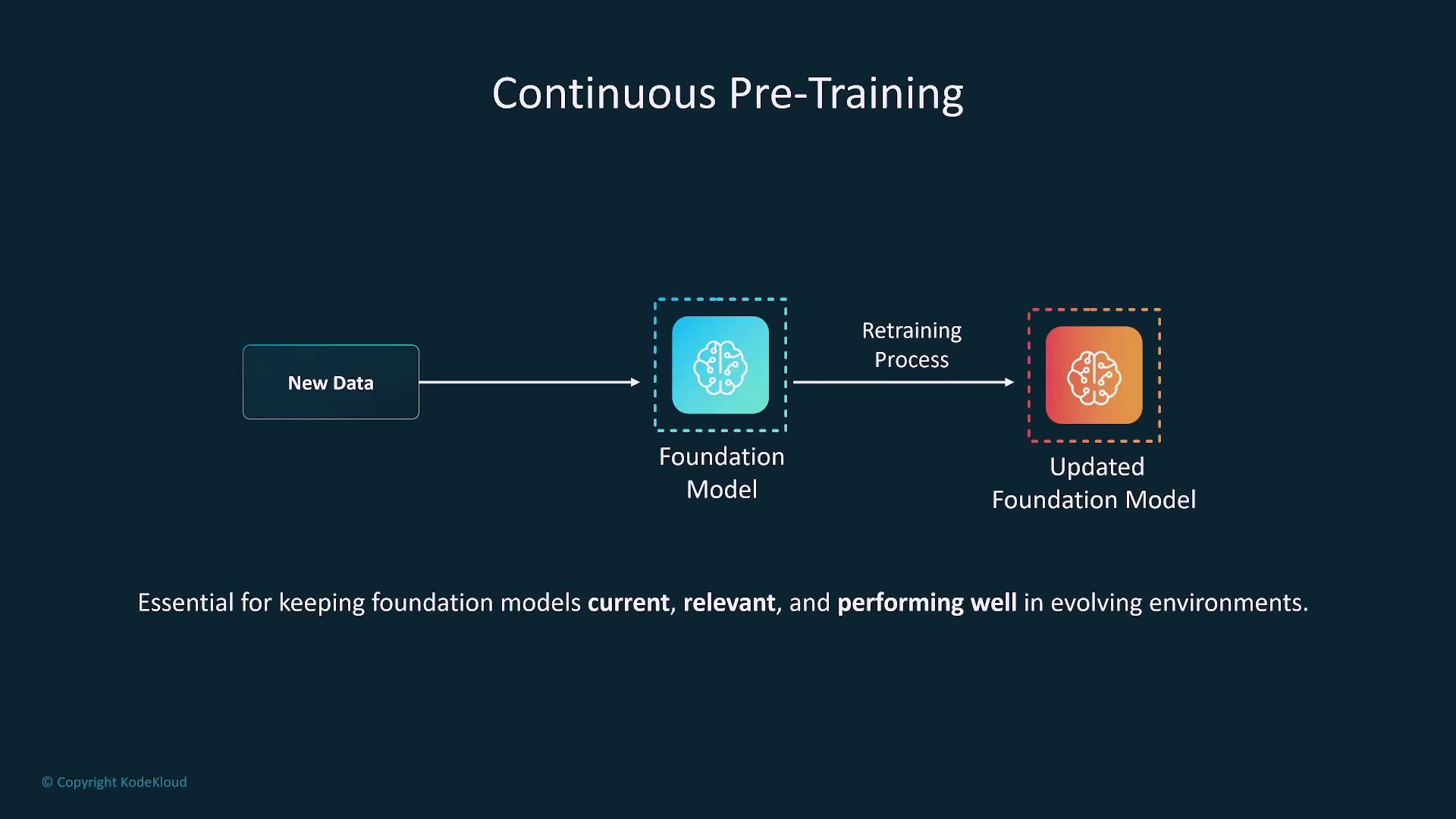
Platforms like KodeKloud streamline continuous pre-training by automating data ingestion and model retraining within robust data processing frameworks.
Data Preparation for Training
High-quality, structured, and clean data is essential regardless of the training method. Effective data preparation includes structuring, cleaning, and segmenting data to maximize training efficiency.
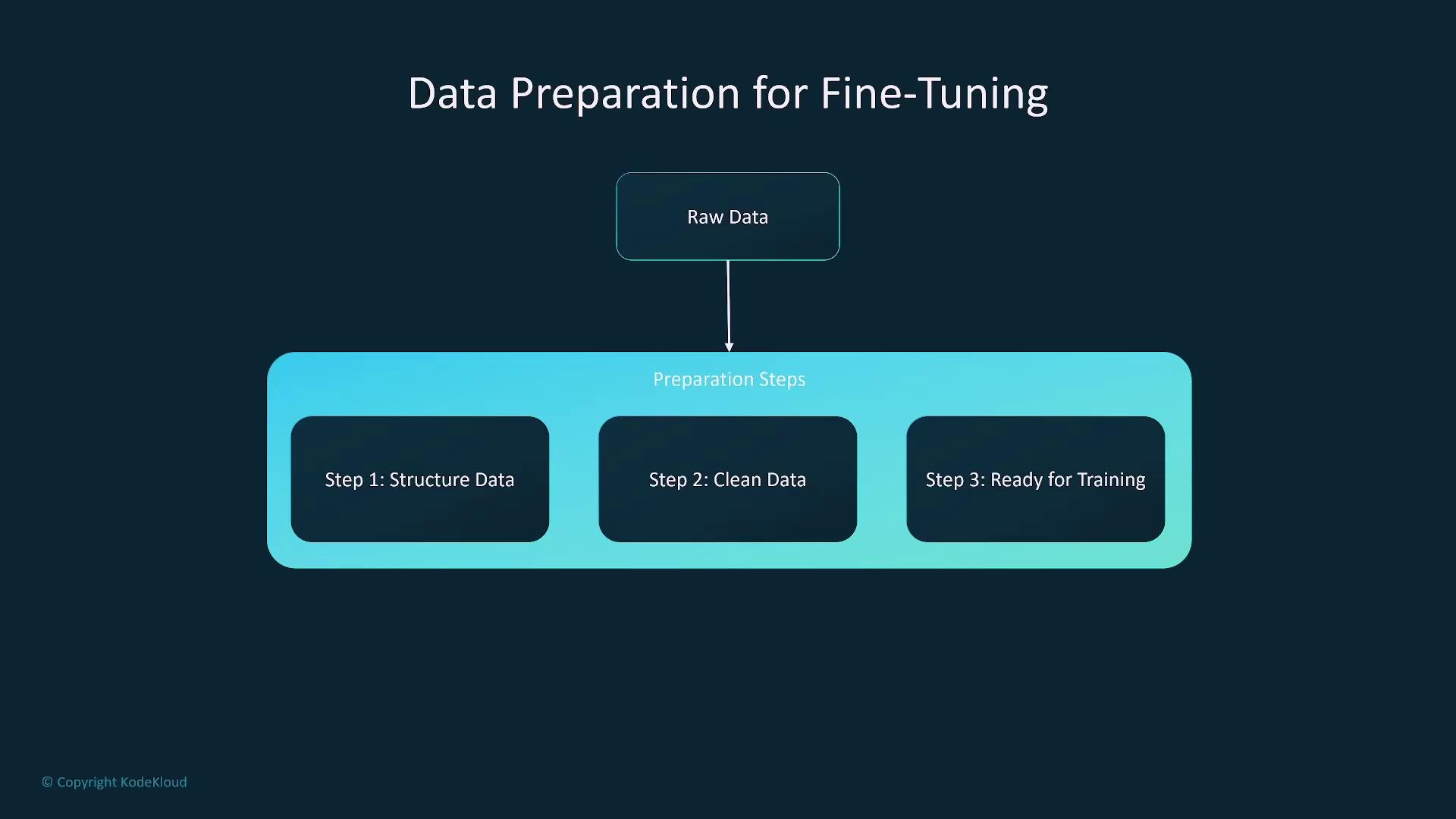
Leveraging prompt templates and specific examples like text summarization, sentiment analysis, and image labeling can guide the model during training.
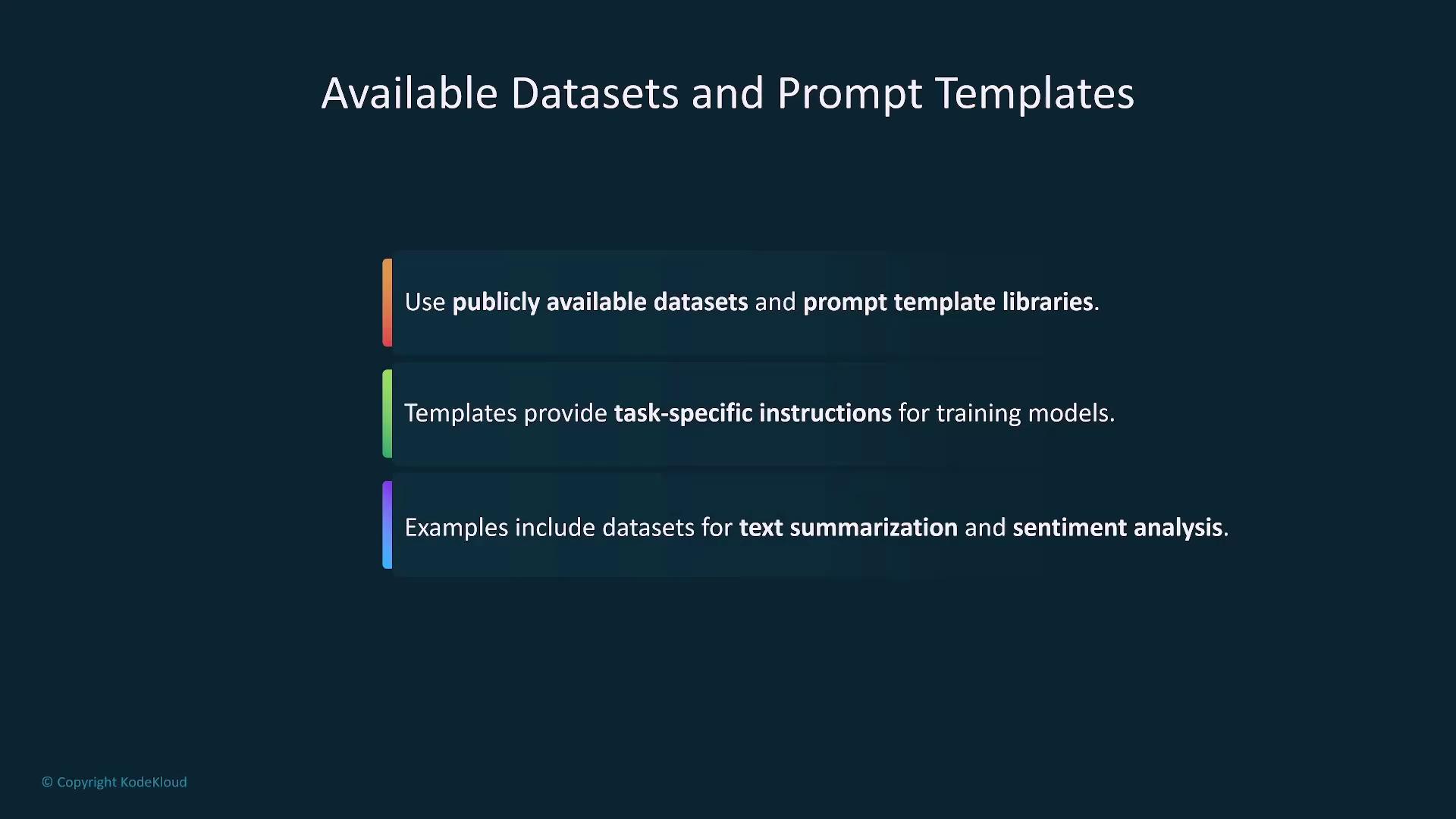
Data is typically divided into training, validation, and test sets (commonly a split like 80-10-10 or 70-20-10) to ensure accurate performance evaluation throughout the development process. Monitoring loss functions and performance metrics is critical during fine-tuning.
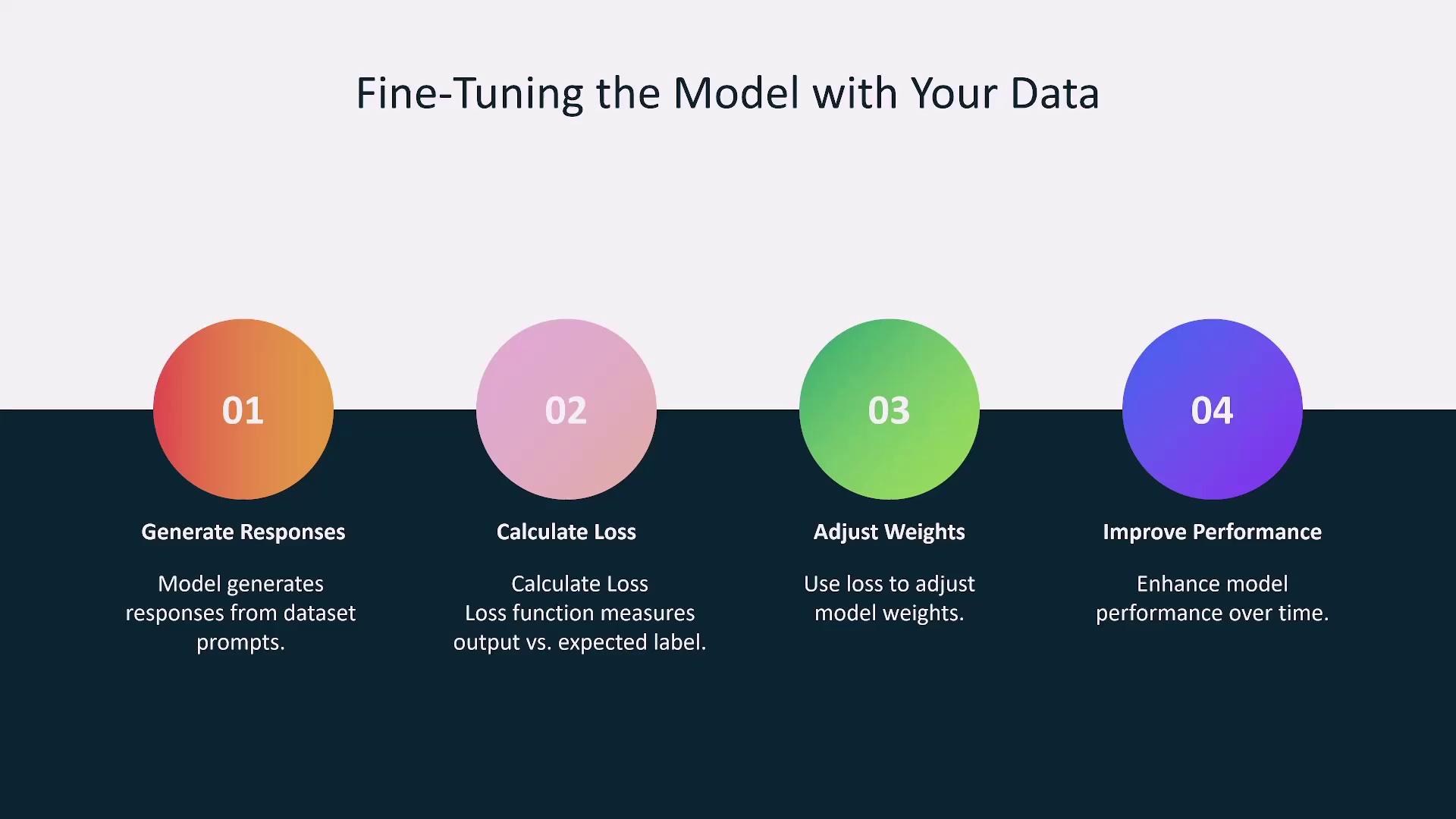
Model Evaluation
Model evaluation is a crucial step after completing fine-tuning or continuous pre-training. Use a validation set to optimize parameters and subsequently test the model with unseen data to ensure that performance meets expectations.
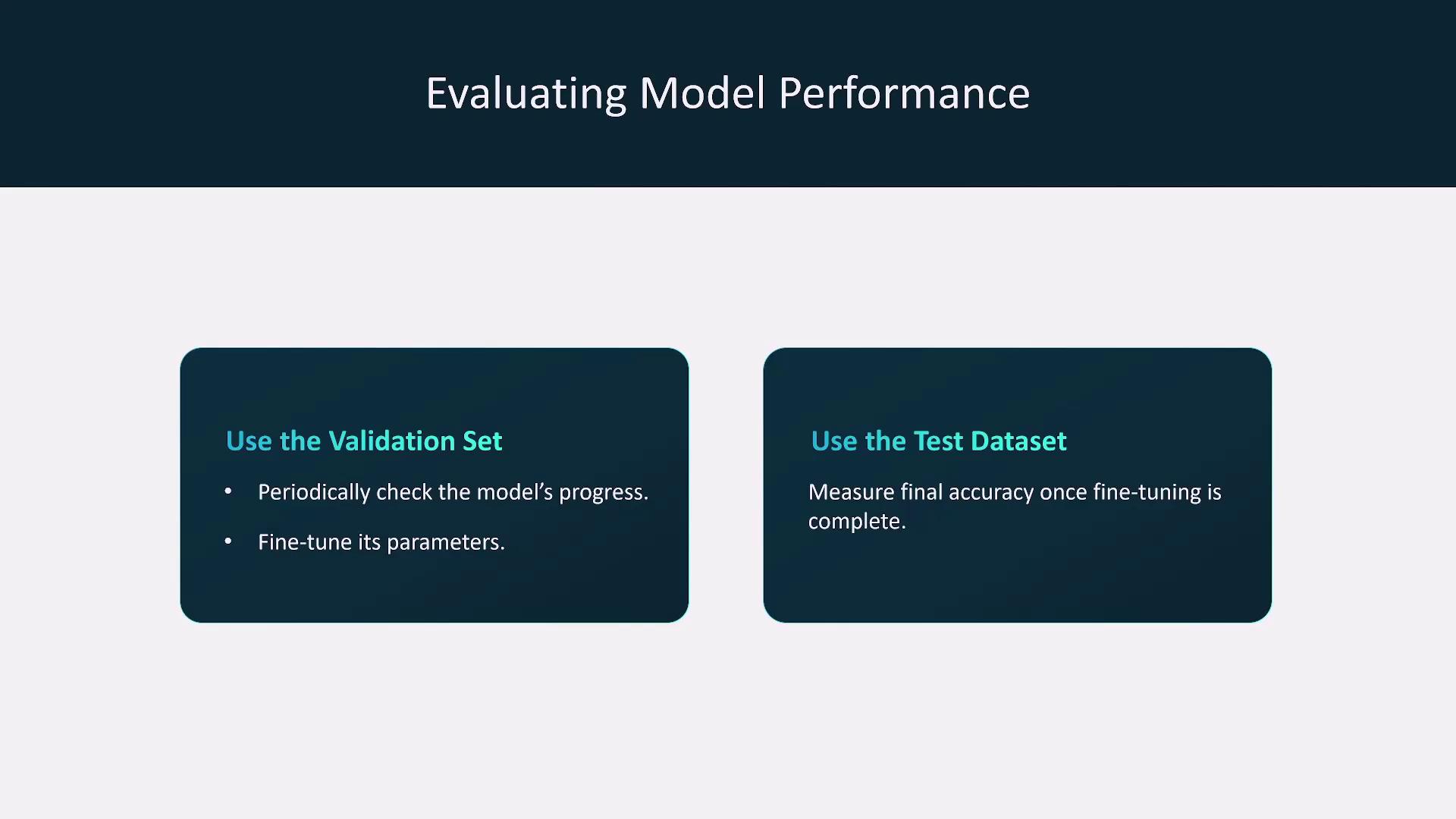
AWS Tools for Data Preparation and Training
AWS provides a suite of tools that simplify data preparation and model training:
- Data Wrangler: A low-code solution for efficient data preparation.
- Athena or Apache EMR: Ideal for large-scale data processing.
- AWS Glue: A robust ETL service for data integration.
- SageMaker Studio: Facilitates comprehensive data modeling and training workflows.
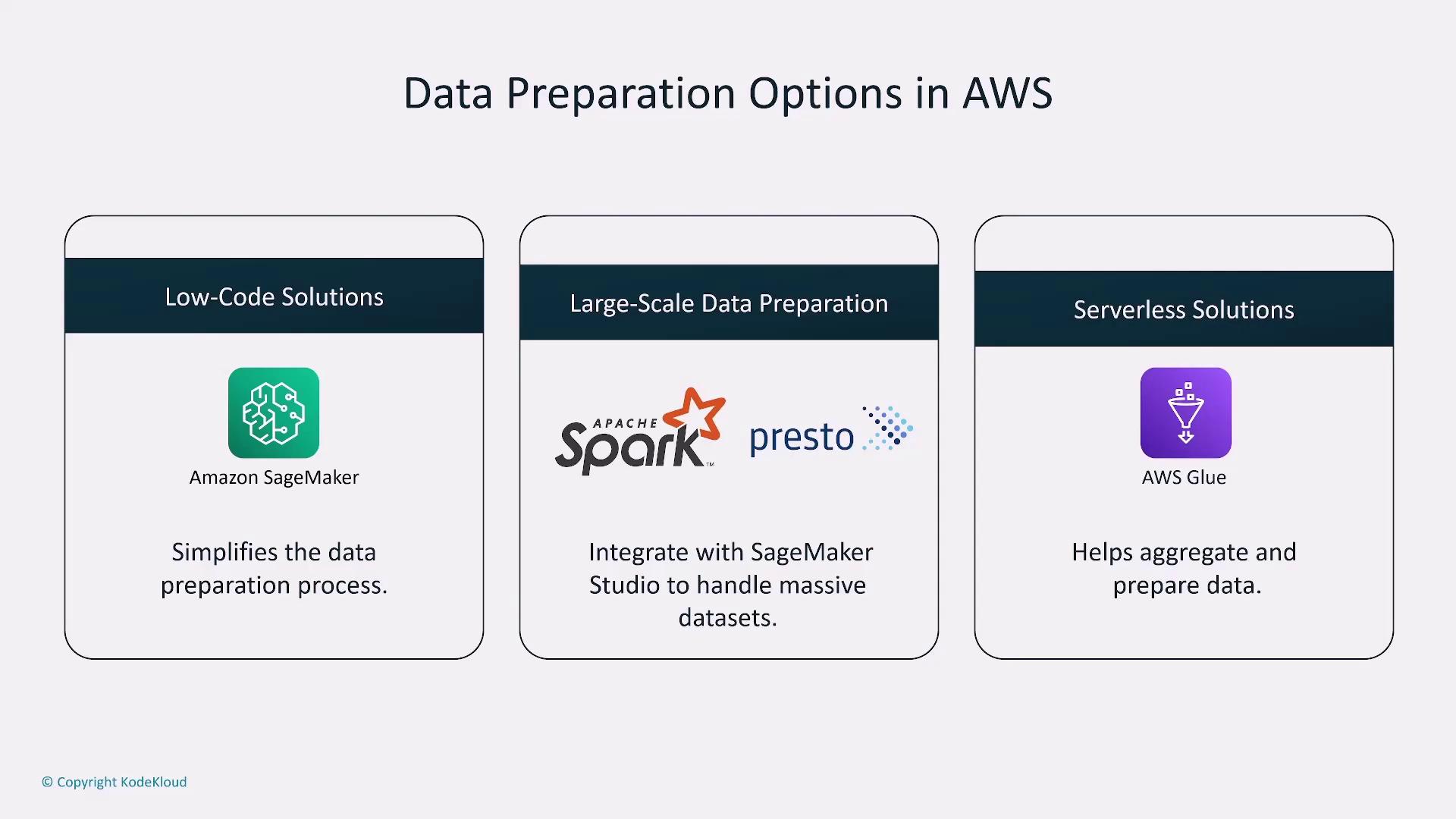
SageMaker Studio also offers an SQL-based interface for data preparation and a Feature Store that centralizes data features for consistent, efficient training.
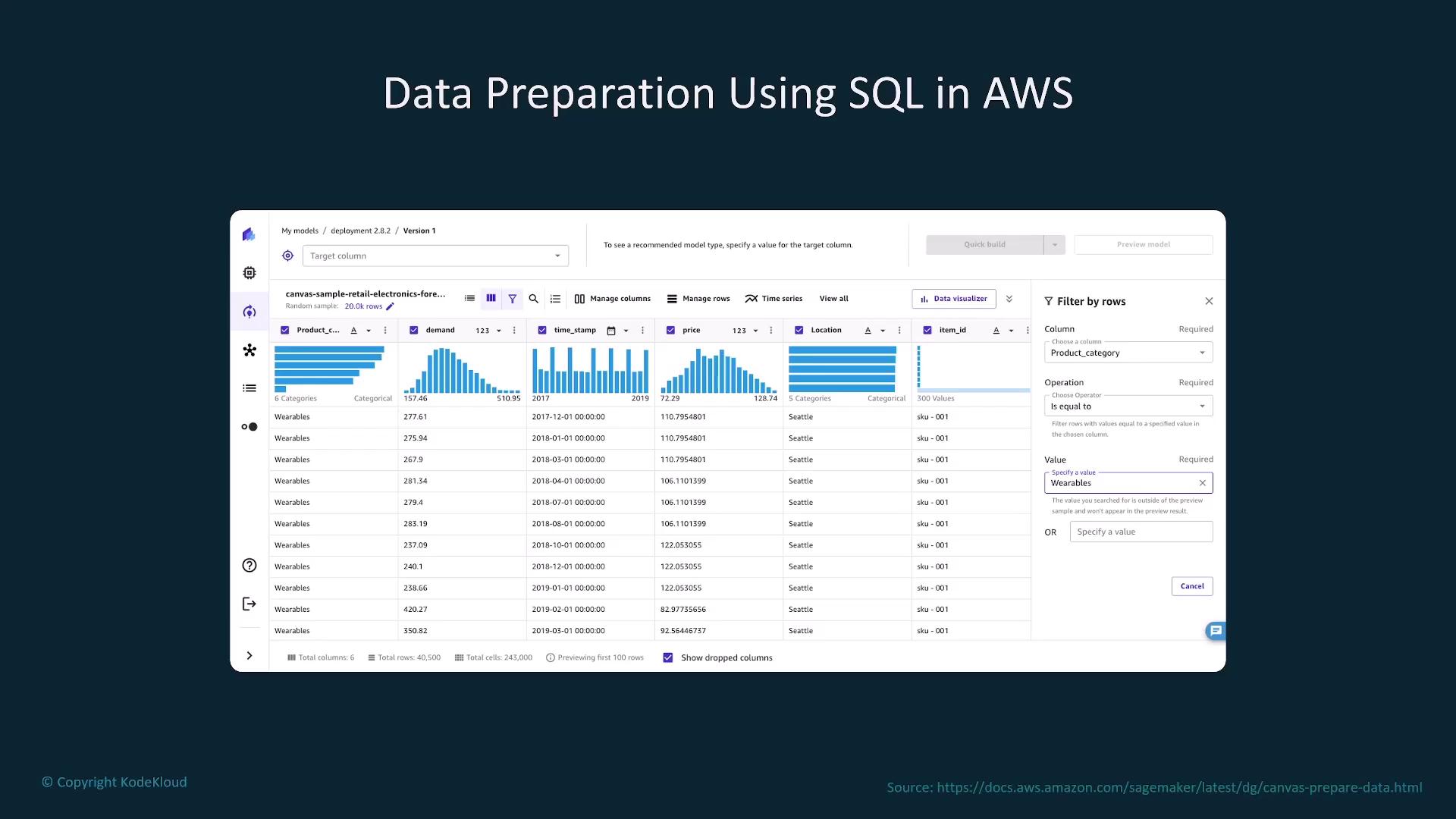
The SageMaker Feature Store further streamlines data organization and management, ensuring reliable and repeatable data splits.

In addition, SageMaker Clarify helps detect and mitigate bias during model training by providing transparency into model behavior.
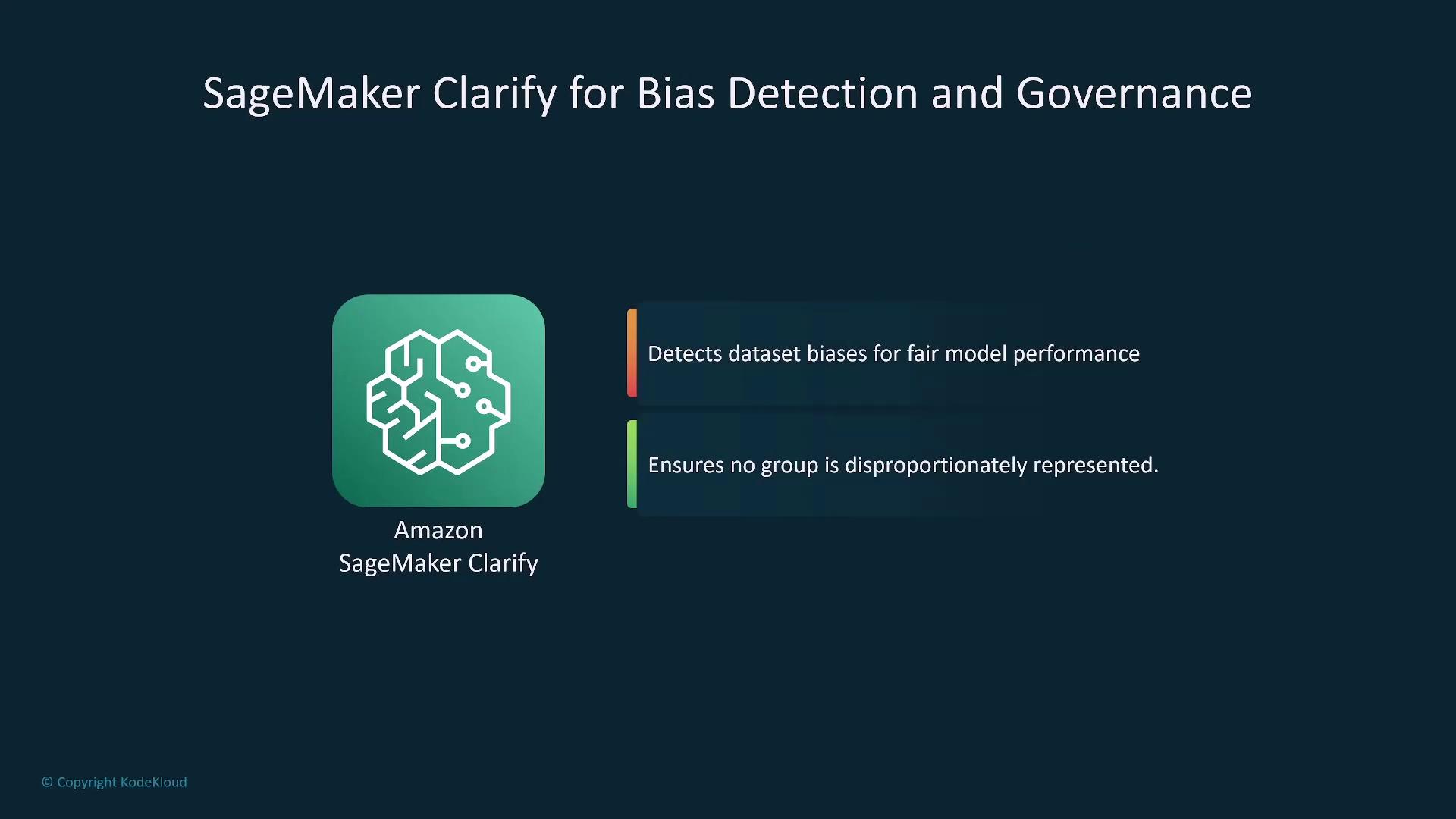
For efficient data labeling workflows, AWS Ground Truth automates the annotation process, ensuring high-quality datasets for supervised learning.
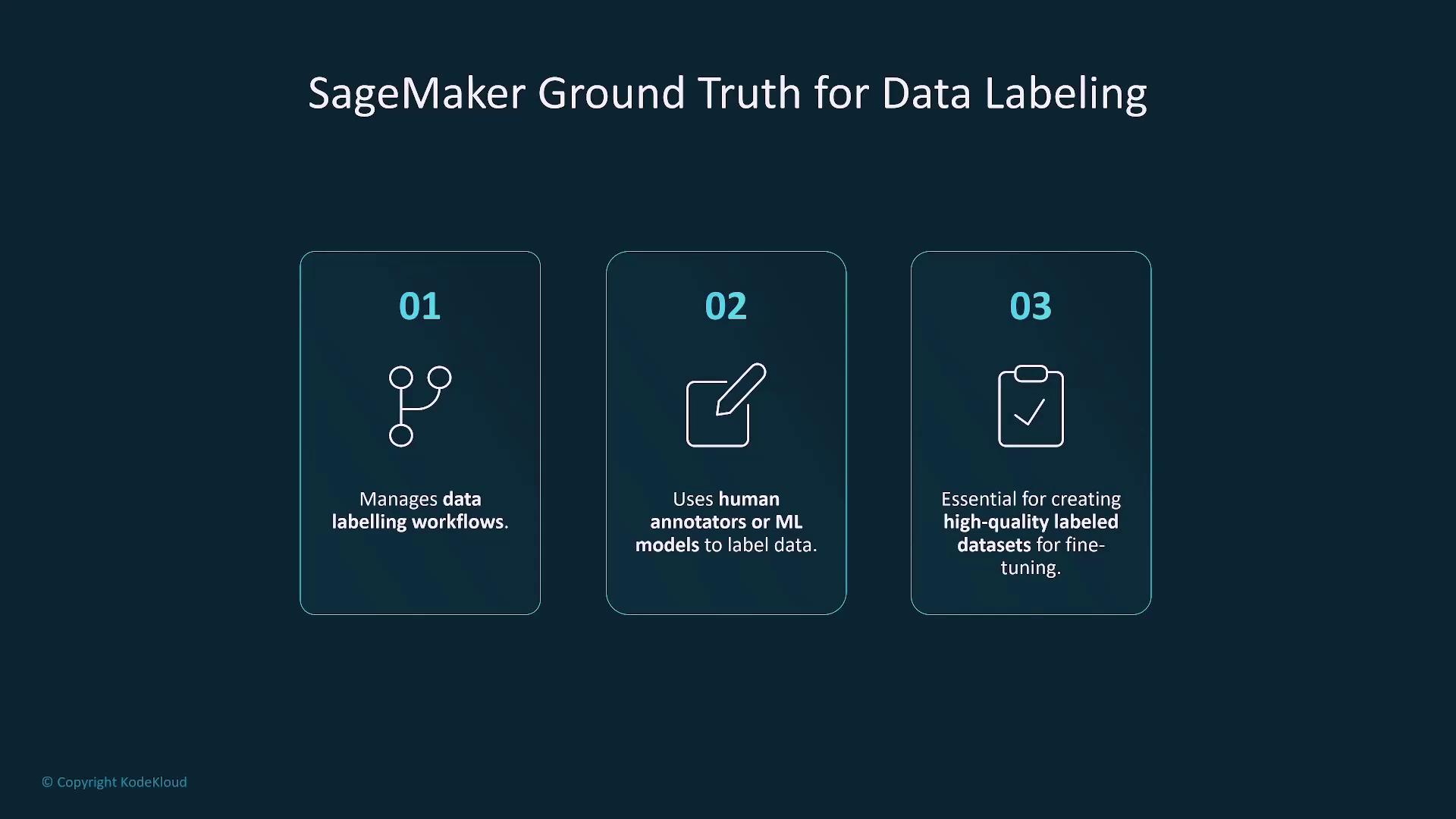
Conclusion
This lesson covered advanced techniques for customizing foundation models through pre-training, fine-tuning (including parameter-efficient, multi-task, and domain-specific approaches), and continuous pre-training. We also explored how various AWS tools streamline data preparation, feature management, bias detection, and model evaluation. Implementing these techniques ensures your foundation models remain both versatile and specialized to meet diverse industry challenges.
Thank you for reading, and we look forward to exploring more advanced topics in our next lesson.
Watch Video
Watch video content